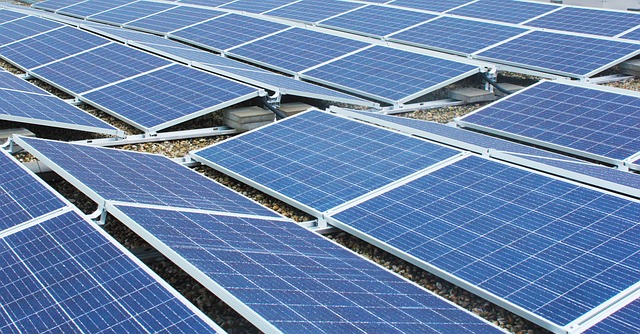Community-Driven Renewable Power Initiatives Making a Difference
In recent years, renewable energy has become a global priority as communities and governments alike recognize the urgent need to reduce carbon emissions and combat climate change. While many large-scale renewable projects have made headlines, numerous grassroots initiatives are making substantial contributions to renewable energy deployment. These community-driven projects not only address local energy needs but empower residents to take charge of their energy future. This article explores various community-driven renewable power initiatives and their profound impact, showcasing the different models and successes that inspire sustainability.
The Importance of Community-Driven Renewable Energy
Community-driven renewable energy initiatives play a vital role in achieving global sustainability goals. They support local economies, foster social cohesion, and promote environmental stewardship. Unlike large utility-driven projects, these initiatives often prioritize local interests, ensuring that the benefits of renewable energy stay within the community.
Importantly, community-driven projects can overcome barriers that large-scale renewable initiatives face, such as funding, regulatory hurdles, and public skepticism. By engaging local stakeholders from the outset, these projects can tailor solutions to meet the specific energy needs and preferences of the community, fostering greater acceptance and participation.
Types of Community-Driven Renewable Power Initiatives
Cooperative Models
One effective approach to community-driven renewable energy is the establishment of cooperatives. These organizations are owned and controlled by their members, often pooling resources to develop renewable energy projects. Cooperative models allow individuals and families to invest in local energy initiatives while sharing in profits and decision-making processes.
For instance, the Cooperative Energy Futures in Minnesota has successfully developed solar arrays that provide clean energy while engaging residents in ownership structures. The cooperative model empowers residents to have a stake in their energy production, fostering a sense of community and shared purpose.
Community Solar Projects
Community solar projects allow community members to invest in shared solar installations, which can often be located on rooftops, vacant lots, or large open spaces. By subscribing to a community solar program, residents can benefit from renewable energy without the challenges of installing solar panels on their properties.
One prominent example is the Mount Pleasant Community Solar Project in Rhode Island. This initiative is designed to provide energy savings for low-to-moderate income households that may not have access to rooftop solar. By aggregating energy production, these projects can reduce energy costs and promote sustainability for all community members.
Local Energy Planning and Management
Communities are increasingly taking the reins in local energy planning and management. By assessing their own energy resources and needs, they can create tailored solutions that prioritize energy efficiency and renewable generation. Community energy planning usually involves collaboration between residents, local governments, and utility providers.
The City of Boulder, Colorado, provides an inspiring case of local energy management. The city has committed to 100% renewable energy by 2030, with extensive community engagement. Through initiatives like Boulder’s Energy Future program, citizens actively participate in shaping the community’s energy vision, exploring options such as municipalization and innovative partnerships with local utilities.
Success Stories from Around the World
Germany’s Energy Transition (Energiewende)
Germany has emerged as a leading example of community-driven renewable energy, largely due to its Energiewende (“energy transition”) policy. This initiative encourages decentralized energy production, allowing municipalities and communities to invest in renewable installations. As a result, nearly 50% of the country’s renewable energy capacity comes from community projects, particularly in wind and solar generation.
In places like Freiburg, citizens have embraced solar energy by integrating photovoltaic systems into residential and public buildings. The city’s strong commitment to sustainability and community engagement has fostered a culture of innovation, resulting in a vibrant renewable energy landscape.
Community Wind Farms in Scotland
Scotland has seen significant growth in community wind farms, where local residents fund and manage wind energy projects. The community-owned Eigg Electric in the Isle of Eigg demonstrates how local control can enhance energy security and independence. This micro-grid system relies on renewable sources, providing 100% of the community’s energy needs while minimizing reliance on fossil fuels.
Challenges and Barriers
While community-driven renewable energy initiatives offer numerous advantages, they also face several challenges. Access to capital remains a significant barrier, particularly for low-income communities that wish to invest in such projects. Additionally, navigating regulatory frameworks and securing permits can be daunting for grassroots organizations that may lack the technical expertise or resources of larger firms.
Effective community engagement is paramount for success. Communities that prioritize inclusivity and transparent communication can build trust and foster participation. Engaging underrepresented populations ensures diverse voices are heard, promoting equitable access to renewable energy benefits.
The Future of Community-Driven Renewable Initiatives
The future of community-driven renewable power initiatives looks promising as more communities recognize the importance of sustainability. Advancements in technology, such as energy storage and smart grids, will enhance community capacity to generate and manage their energy. Moreover, increasing concern about climate change is motivating citizens to seek solutions that are both environmentally friendly and economically viable.
Local governments can encourage these initiatives through supportive policies, funding, and resources that promote cooperative energy models and streamlined permitting processes. Educational programs and workshops can empower citizens to engage actively in renewable energy advocacy and implementation, fostering a culture of sustainability.
Conclusion
Community-driven renewable power initiatives are reshaping the energy landscape, offering innovative and effective solutions to meet local energy needs while addressing global climate challenges. These grassroots movements not only enhance energy resilience but foster community empowerment, collaboration, and social equity.
As we look to the future, investing in community-driven initiatives will be essential to achieving a sustainable energy transition. By leveraging local resources, expertise, and enthusiasm, communities can cultivate sustainable solutions that will leave a lasting impact for generations to come.



